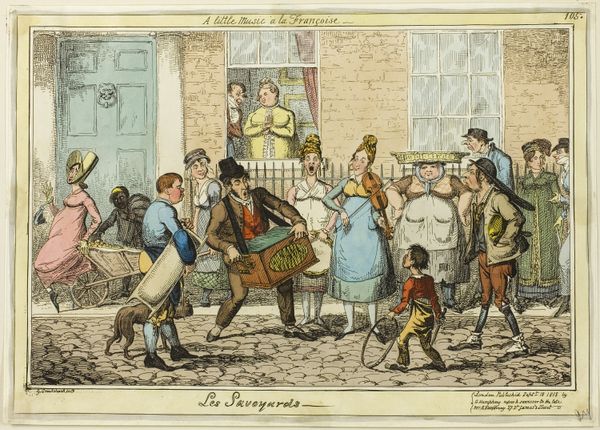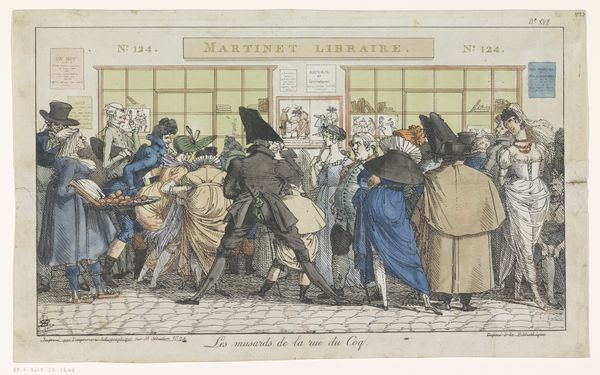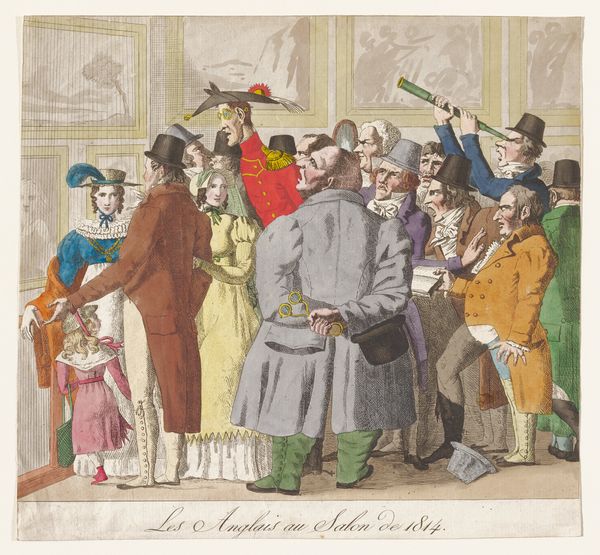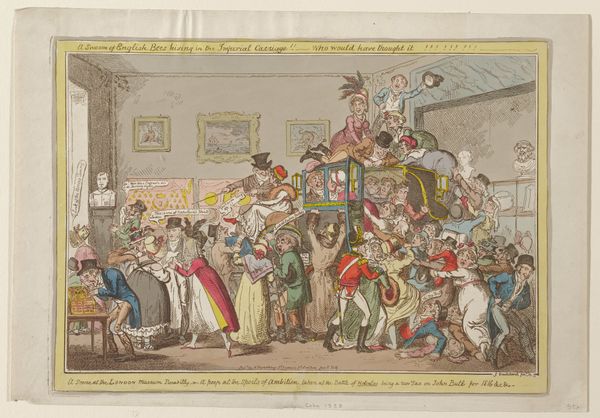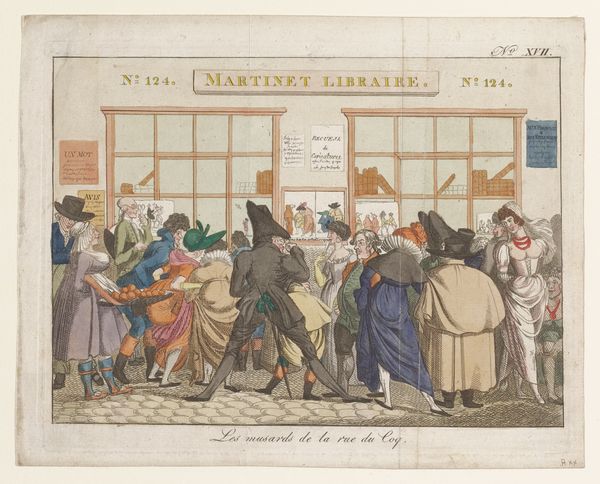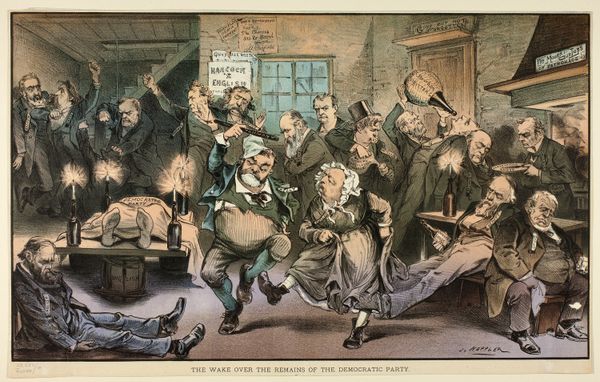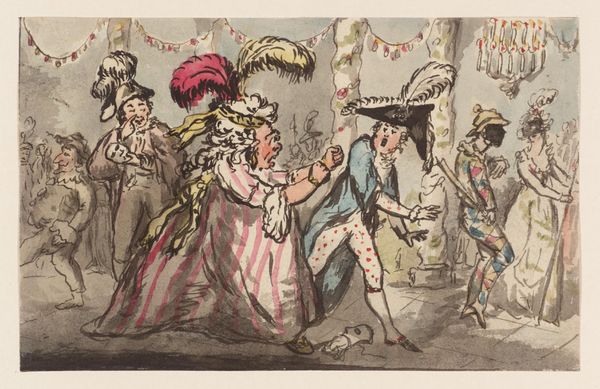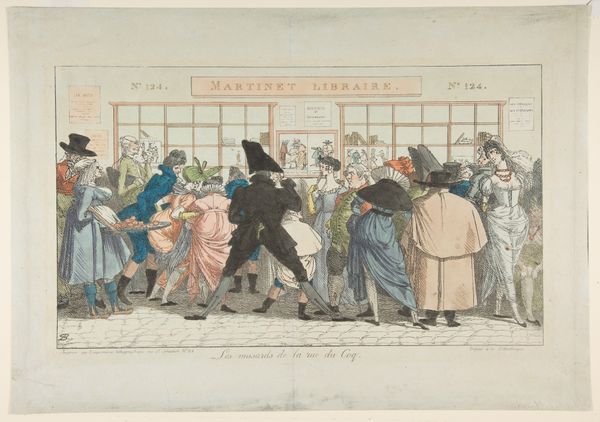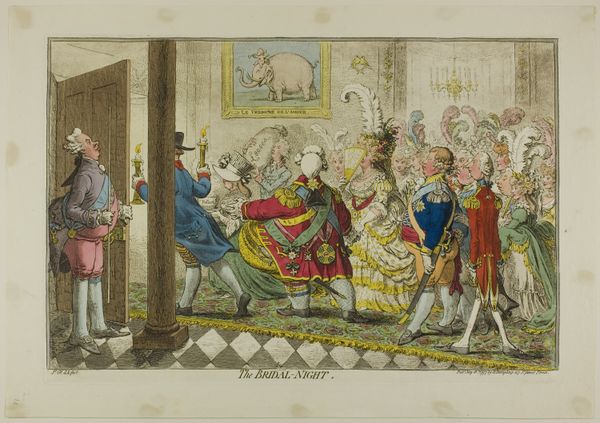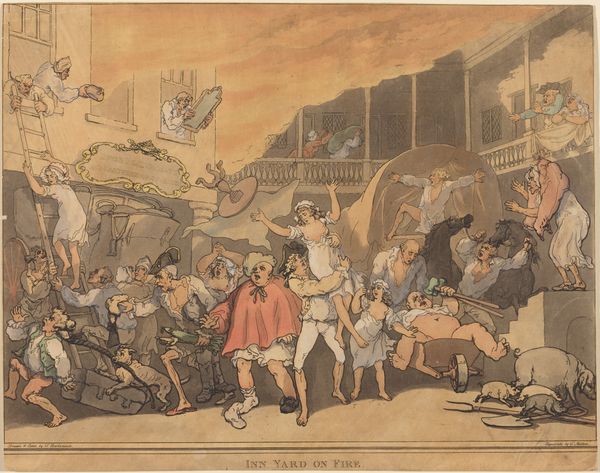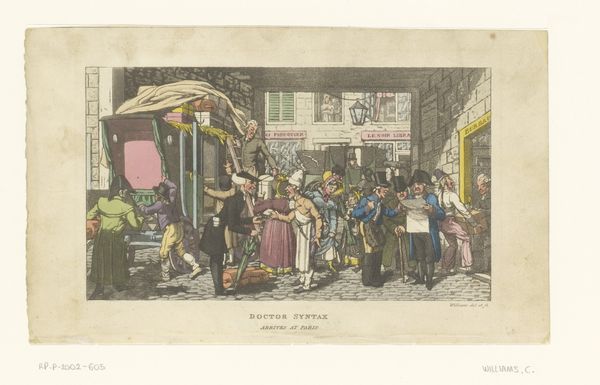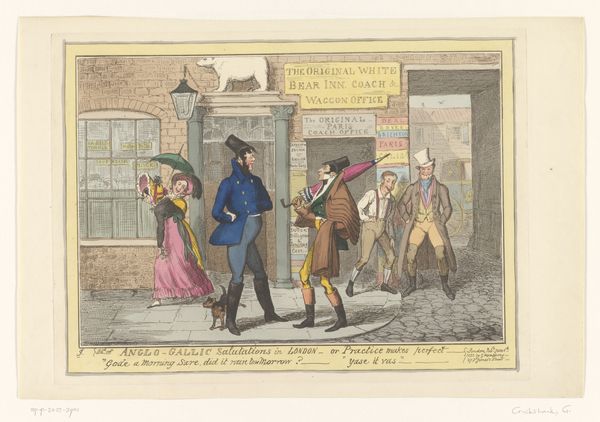
drawing, coloured-pencil, print, etching
#
drawing
#
coloured-pencil
#
narrative-art
# print
#
etching
#
caricature
#
figuration
#
coloured pencil
#
romanticism
Dimensions: Sheet: 8 7/16 × 12 15/16 in. (21.5 × 32.8 cm)
Copyright: Public Domain
Editor: Here we have "The March of Morality," a colored pencil and etching by William Heath, created around 1828. The composition is so busy! What I immediately notice is the crowd's somewhat exaggerated expressions, giving it a satirical feel. What do you see in this piece? Curator: It's a powerful social commentary indeed. Heath’s caricature reflects the rising tide of moral conservatism in 19th-century Britain, particularly its impact on the arts. The "march" isn't necessarily about genuine virtue; instead, it mocks the hypocrisy and often performative nature of public morality. Note the juxtaposition of the figures: The self-righteous leaders contrasted with the blatant commercialism in the background, like the shops and the displayed nudes in windows. How does this contrast strike you? Editor: It makes me think about the complex relationship between public and private life. The figures on pedestals are so vulnerable in comparison with those pointing at them. It's almost like they're policing personal freedoms and controlling what is accepted by society. Curator: Precisely. Consider the role of gender in this "march." Who is dictating morality, and who is being targeted? The piece hints at the patriarchal structures that sought to control female sexuality and expression through censorship and judgment. The fashionable women are subject to scrutiny, aren’t they? This artwork asks us to question who benefits from enforcing these rigid social codes. Editor: I hadn't really considered the gendered aspects that explicitly before, that's insightful. I see that there's so much happening just below the surface! Curator: Indeed, Heath provokes us to think critically about the power dynamics embedded within social norms and who gets to define them. Editor: It's given me a completely new way to look at social commentary in art. Thanks!
Comments
No comments
Be the first to comment and join the conversation on the ultimate creative platform.
